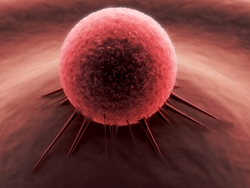Wakening up the sleeping anti-tumour potential of p53
P53 is regarded as a universal tumour suppressor protein that gets activated following DNA damage to trigger cell-cycle checkpoints or apoptosis. It is mutated in about 50 % of cancers but remains functional in the rest of the cases, comprising a potential target for preventing tumour development. However, often the activity of p53 is hampered by molecules such as Mdm2 or p73. To discover how these proteins exert their modulating effect on p53, the EU-funded ‘Manipulating tumor suppression: a key to improve cancer treatment’ (ACTIVEP53) project brought together leading scientists in the field from 19 research centres across Europe. The main idea behind ACTIVEP53 was to use breast cancer as a model for defining the mechanisms of action of p53 modulators. This information would then be translated for the generation of small therapeutic molecules. Project scientists gained important insight into the interaction of p53 including apoptosis-stimulation of p53 protein 2 (ASSP2) in inducing apoptosis. They delineated the roles of p53-modifying enzymes known to impact the transcriptional activity of p53 and also studied the processes leading to p53 activation by small molecules. Correlations between the BRCA1/2 status in breast cancer and the p53-modifying enzyme Ataxia telangiectasia mutated (ATM) helped to obtain vital information on the clinical implications of these proteins. Additional senescence markers, other than DNA damage, were identified that could potentially trigger p53-mediated apoptosis. Furthermore, a positive feedback loop between Lats2 and p53 was found, leading to p53 activation. The ACTIVEP53 study constituted a thorough investigation of p53 function and its regulatory mechanisms in cancer. The information generated has great potential to become translated into clinical practice with obvious benefits for many cancer patients.







